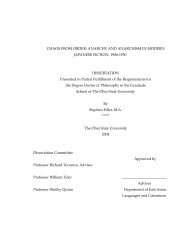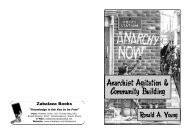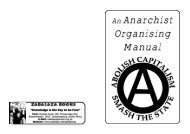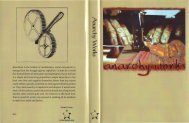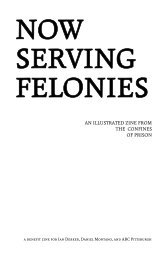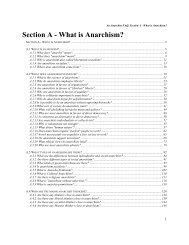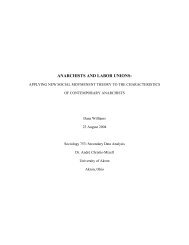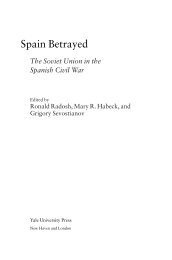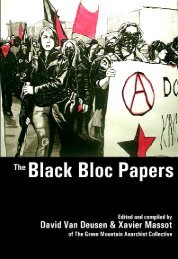Graham Gamblin - Infoshop.org
Graham Gamblin - Infoshop.org
Graham Gamblin - Infoshop.org
You also want an ePaper? Increase the reach of your titles
YUMPU automatically turns print PDFs into web optimized ePapers that Google loves.
popular rising and effectively administer the social revolution. Nechaev's<br />
Machiavellism, his willingness to deceive his comrades, regarding them as<br />
expendable revolutionary capital, and his "Jesuitical schemes" as Bakunin called<br />
them, aroused the disgust of most radicals when they came to light after the murder<br />
by Nechaev and a few comrades of one of his followers. This had the effect of<br />
strengthening for the next few years the propaganda and popular movement tendency<br />
of Populism. The largest and most effective <strong>org</strong>anisation of this tendency was the<br />
Chaikovskii circle.<br />
The Chaikovskii circle began as a student self-education group, which merged<br />
with a women's group in St. Petersburg in 1871 with the aim of spreading socialist<br />
ideas among the intelligentsia. Branches of this <strong>org</strong>anisation quickly sprang up in<br />
Moscow and in the provinces. Their ideas at the beginning of the 1870s were roughly<br />
in line with those of the émigré P. Lavrov, who called for a long-term development of<br />
a socialist intelligentsia which could spread knowledge among the people. Within a<br />
few years however, with the influx of more radical members like Petr Kropotkin and<br />
Sergei Kravchinskii, and as contact was made with workers, they began to look for a<br />
more radical program and the building of a popular movement based on peasants and<br />
workers. By 1873, Lavrov's more moderate program of propaganda and intellectual<br />
and moral preparation among the intelligentsia was being left behind by events; when<br />
illegal literature from socialist circles abroad began to arrive, it was Bakunin's<br />
"Statism and Anarchy", with its radical program of peasant insurrection, which found<br />
favour over Lavrov's journal "Forward!" among the Chaikovtsy. 11 With the Jacobins<br />
out of favour for the time being, debate was between those who favoured a long, slow<br />
propaganda campaign, and those who believed that what the peasants needed was not<br />
theory but help to <strong>org</strong>anise revolts. The Chaikovskists covered a broad spectrum of<br />
ideas between these extremes; they were not anarchists, having no clear-cut<br />
ideological position, but found themselves in a similar position to Bakunin and the<br />
anarchists in the West. Furthermore, more extreme and explicitly Bakuninist groups<br />
grew up, known as buntari, or "rebels" for their desire to <strong>org</strong>anise and co-ordinate<br />
peasant bunts. The buntari were always stronger in the South of Russia and in<br />
Ukraine, particularly in Kiev and Odessa. There were certainly Bakuninist circles in<br />
11 P. Akselrod, Perezhitoe i peredumannoe, Berlin 1923 p.101; L. Shishko in P. Lavrov, Narodnikipropagandisty,<br />
St. Petersburg 1907, p.187<br />
7



